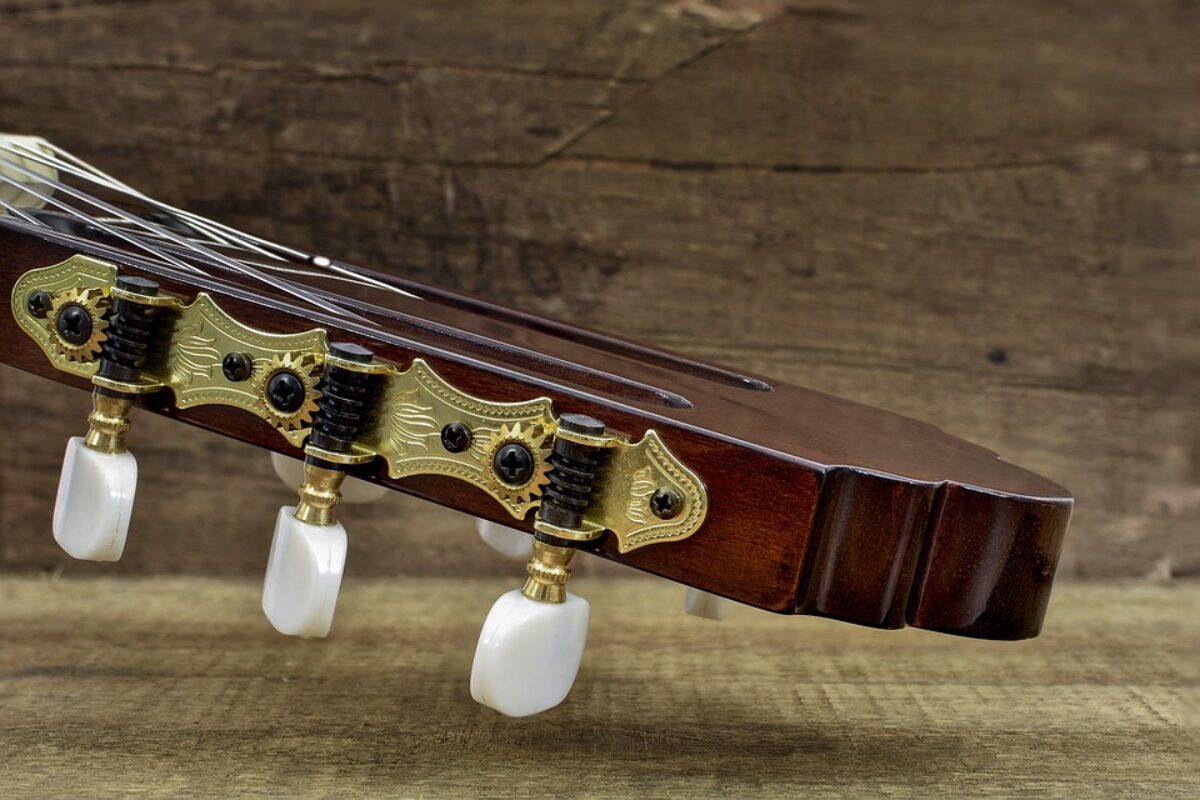Program Notes for Jeff Dwarshuis Recording – “The Guitar Works of Fernando Sor”
Track 1. Etude Opus 6 No. 8 (1) In 1945 Andres Segovia reviewed the extensive collection of studies by Fernando Sor (1778-1839)and put together a set of twenty studies by Sor which he thought were important pieces for developing modern technique for the classical guitar. This study is the first of the Segovia collection. This piece highlights the use of sliding two note chords as well as the use of legatos – a technique that occurs when the left hand plays alone a series of notes by using “pull offs” and “hammers ons” without the use of the right pluck.
Track 2. Etude Opus 34 No.22 (5) Fernando Sor’s study in B minor is a famous and beautiful piece of music. This piece is an exploration of melody on the guitar as well as a highlight of an unusual key for the guitar. The key of B minor centers on the guitar’s second fret and top four strings – a very “quiet” area of the guitar. The complication of this piece for the guitarist is to provide the breath needed to do justice to the melody while working within a very limited range of volume and color.
Track 3. Sonata Seconda Opus 15(b) This major piece by Sor is a one movement Sonata and shows influences from the great pianist Domenico Scarlatti. The piece highlights Sor’s ability as a composer as well as his creative use of texture for the guitar. Over the decades this work has gone through a variety of versions as publishes have allowed. This particular recorded performance takes from Sor’s original publication.
Track 4. Etude 29 No 13(19) – This study is a beautiful and famous etude written by Sor and one of the most difficult of the collection of Segovia’s twenty studies. Primarily a study in right hand arpeggio work the piece also was intended to develop left hand strength. Written in the key of B flat major – the guitarist is required to do extensive playing while holding barre chords on the first fret – the most difficult area to hold a barre chord. Later when Segovia transposed this piece he suggested a slower tempo than that written by Sor. The result is even more left hand demand as the player is required to hold the chords for a longer period of time.
Track 5. Opus 6 No. 12. (14) – This study is a beautiful piece of music that most likely was written to emulate a string quartet. This piece maintains the use of four voices throughout the entire piece – the highest number of voices the guitar can play at one time. Additionally this is one of the longest studies of the collection.
Track 6. Etude Opus 35 No 13. (2) – This study emulates a keyboard study. The comparison is shown primarily through its upper melody played over the accompanying chords below. This is a study typical of the classical era and is a short piece that concludes with lower end harmony.
Track 7. Grand Solo Opus 14 – Grand Solo is a one movement sonata and perhaps Sor’s finest extended work. Long, grandiose and imaginative Grand Solo uses the guitar to it fullest. In this piece Sor uses the “Drop D” tuning which involves lowering the bottom E note a full two frets. The result is broader range of possibilities for color and range. Often understood as a piece written to mimic the sounds of an orchestra, Grand Solo makes use of the possibilities of the guitar by covering nearly three and a half octaves.
Track 8. Etude Opus 35 No. 17 (6) – This is a short and popular study for the guitar. Like many studies of the time this aims to develop the right hand’s ability to accent the volume of specific notes to project melody. Sor presented the added challenge of emphasizing two successive melody notes throughout the song.
Track 9. Etude Opus 6 No. 11 (17) – This is one of Sor’s longer studies. It is beautiful, warm and primarily a study in arpeggios. The texture of this piece comes from its almost continual use of the low end of the guitar. Also it has no repeated patterns and has a key change. The unique musical texture also comes from Sor’s approach to chords in this study. In this piece he requires that notes of the chord be skipped which creates the effect of projecting a broader range of notes and requires the performer do an exceptional amount of right hand movement to skip strings.
Tracks 10 and 11. Introduction and Variation on a Theme of Mozart – In 1819 Fernando Sor attended the first performance of Mozart’s “The Magic Flute” and was inspired to write a major work around a musical theme found near the end of act one. This particular piece purposefully captures every technical demand for the classical guitar known at the time as the theme is repeated through various expressions. The classical guitar at the time was smaller than today’s classical guitar thus today’s performer is confronted with considerable demands on the left hand in order to carry out the piece as written.
Track 12. Etude Opus 29 No. 17 (20) – As Segovia selected this study he most likely was thinking about its close yet less demanding partner of Etude #1 (Track 1). Both studies share a range of common elements. Both are in the key of C and both involve the extensive use of sliding chords to push melodic suggestion. Etude twenty differs in its timing demands as well as covering a wider range of the guitar.
Numbers in parenthesis represent the Sor etude collected and ordered by Andres Segovia for his collection of “Twenty Etudes for Guitar by Fernando Sor”.
For a purchase of Jeff Dwarshuis’ recording – “The Guitar Works of Fernando Sor” – click here which will take you to the purchase page.
